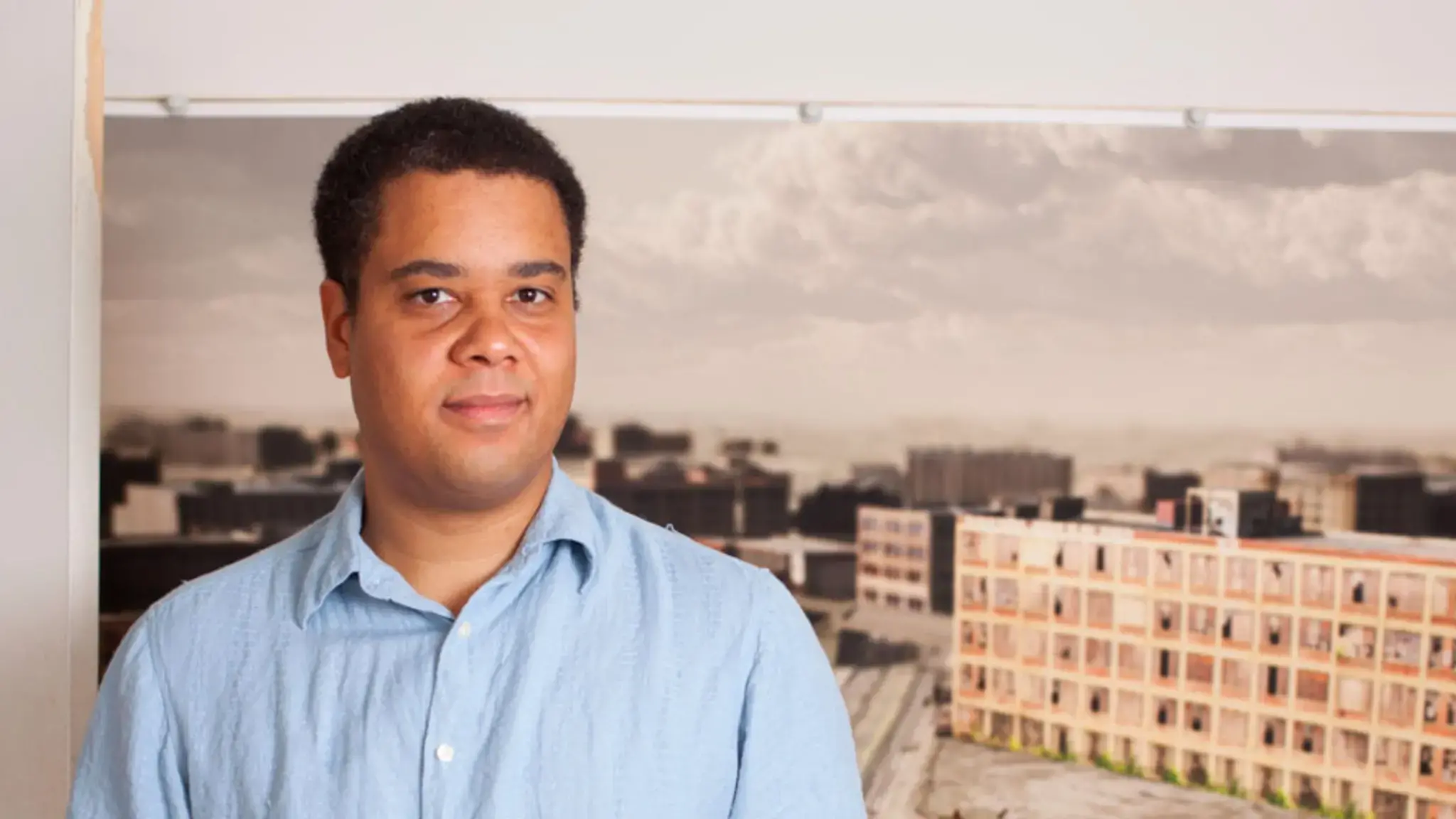

As part of our “Fellows Friday” feature, we focus on the artistic lives of our Pew Fellows: their aspirations, influences, and creative challenges.
This week, we speak to visual artist Tim Portlock, whose current body of work explores the dialogue between place and the formation of identity. Using 3D gaming technology, Portlock creates haunting, post-apocalyptic urban landscapes that simulate real world and imagined spaces. Originally trained as a muralist, Portlock is a former member of the artist collective Vox Populi.
What images or things keep you company in the space where you work?
I have issues of Harper’s Weekly: A Journal of Civilization, which existed from the time of the Civil War to the early 20th century. Harper’s Weekly started out as a journal for reporting news from the war. Because photography had not yet been integrated into printed journalism, news stories often came with illustrations visualizing the event being reported. Looking at the illustrations in Harper’s Weekly today—from the perspective of a time saturated with photographic imagery—raises a lot of issues that I think are interesting to consider. Plus, the illustrations are amazing.
Which artist would you most like to have dinner with, from any time in history?
William Hogarth. He strikes me as a renaissance man very much engaged in the politics of his place and time with a seriously acerbic sense of humor. Hogarth and his close circle of friends designed the first modern copyright laws in the West to deal with the art forgery that was happening during their time.
What is your favorite title of an art work?
Yellow Back Radio Broke-Down, which is the title of a novel written by one of my favorite authors, Ishmael Reed. The book breaks down the conventions of the cowboy novel, and then reconstitutes them to critique Western culture and its notions of “the Other.”
How does residing in this region contribute to your artistic practice?
I spent most of my life in Chicago. When I moved to Philadelphia, I could not help fixating on the grand historic aspects of the city, which led to my thinking about American art from the 19th century. The ideals associated with these aspects of the city contrast with the depressed post-industrial conditions of much of present day Philadelphia. My art contrasts these two aspects of living in Philadelphia.